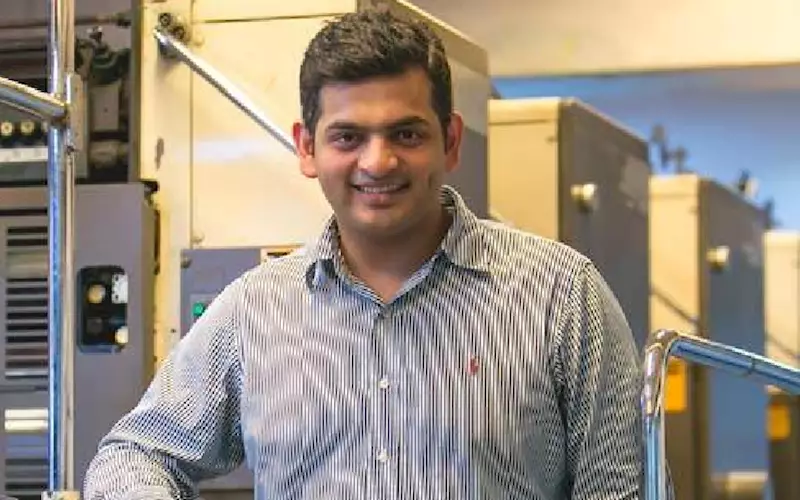Ankit Tanna: Why be aware of the electricity challenge
Every seminar one attends, carbon footprint reduction seems to be the primary topic of conversation in the print industry, with recyclables, chemicals and shifts to new, greener machinery seeming to dominate industry discussion. These are the big ticket items. I think, as a print CEO, one must also take a good hard look at building costs.
17 Nov 2020 | By Ankit Tanna
All of us look at our printing equipment and the manufacturing process. In fact this is the first thing you should address. But in reality, there are big gains to be made from just examining your everyday practical activities. I feel if a printer is looking for things they can do to reduce their own energy consumption, the easiest changes are often to be found in the building services: cooling, heating, lighting and so forth, and in IT.
Sometimes it can be commonsensical things: where is the hot air escaping and cold air entering the factory; where solar gain is overheating areas; automated controls or manual ops. In all this, I decided to dig deep into our electricity charges and try and understand each component. We did an energy audit.
Let me share the things I have learnt about the electricity bill. The first thing I noticed in the electricity bill is the bill due and due date. We get a 1% discount if we pay up to one week in advance. This is a great savings getting 1% for paying just one week in advance. To do this smoothly, ensure the correct email id and phone number is updated from the electricity board. Now, sanctioned load and connected load is what Printmann applied for in all our factories. The contract demand (KVA) is what we can use maximum. 55% of contract demand in KVA is what we pay minimum to the board.
So if actual KVA consumption is less than that it’s a loss and contract demand needs to reduce. Security deposit should not be more than the average of three months’ highest bill in the past one year. If it’s more than that you can claim a refund. We get a 7.5%-8% interest on our security deposit in April or May every month. If you feel you can get higher returns than that you can give a bank guarantee from your bank and withdraw the entire security deposit. The billing history provides you the last 12 months history. Make a simple trend analysis graph and analyse if there is deviation of more than 10%.
If they can do it, so can we. And so, pay heed to the current consumption details – the difference between KWH and KVAH causes an escalation in bills and that difference can be reduced by achieving power factor close to 1 (0.99).
• Ensure your team understand this simple calculation:
• Billing details – demand charges is billed demand (KVA) x 414
• Wheeling charges is ‘0.57 x no of units consumed’
• Energy charges is ‘No of units x rate per unit (7.02 for me)’
TOD tariff EC is the benefit we get for working in certain time zones (refer to the zone table in your electricity bill). The amount is the addition of four zones. This is a prudent and sensible way to plan your shifts, tea breaks, and lunch breaks . For all units used between 22.00-6.00 hours we get a Rs.1.5 rebate from the electricity board. For these electricity reduction measures to truly start paying dividends, it’s essential your workforce – the people who’ll be carrying out the procedures – are on-side. That can be the hardest part.
Usually it helps to make sure everyone knows what you’re doing and why, and if you share results: measure everything and celebrate success. For instance, everyone should know that the electricity duty is (demand charges +wheeling charges +energy charges – TOD charges) x 9.3%. That way one can calculate the bulk consumption rate. For example, if we consume more than 1,00,000 units we get a 2% rebate on all units above 1,00,000. Now, if we consume 1,50,000 units we get a rebate of {50000 x 7.02 (rate per unit)} x 2%. The tax on sale is 19 paise per unit consumed.
You know these numbers and so should your team. Use data in order to make your ops more efficient. Remember the old business adage, money saved is money earned.
Ankit Tanna is the director at Printmann Group














 See All
See All